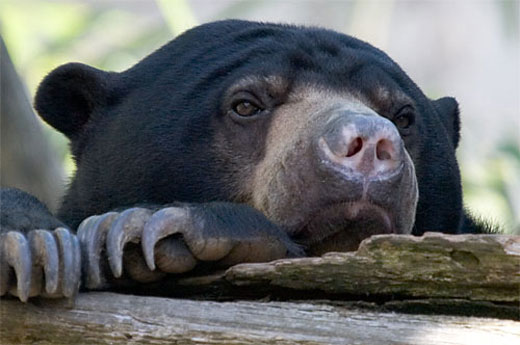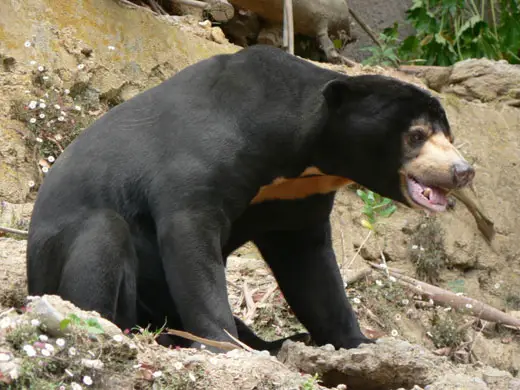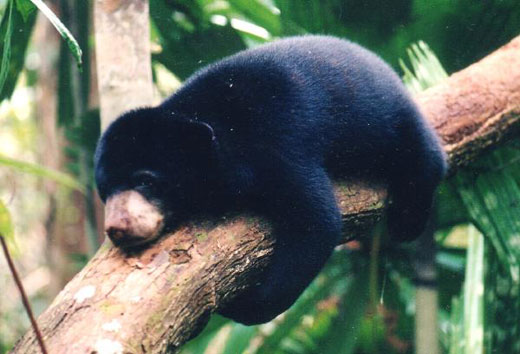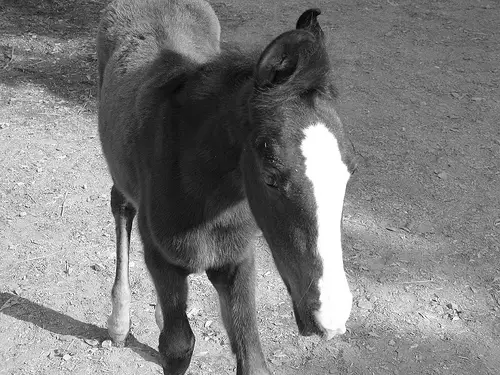Sun Bear
The Sun Bear was given the name because it appears as though a sun is rising on its beautiful golden face. Many of the bears also have a golden patch on their neck or chest area to match the golden color on the mask. These bears are related to all other bear species, though they stand apart as they are known to be the smallest type of bear that is still in existence today. There is very little that is actually known about these bears from a scientific point of view, which makes them all the more interesting to a lot of people.

The Sun Bear’s Habitat
The Sun Bear is known to dwell in the lowland tropical rainforest though there is a very little known about the actual distribution of it. The bears are found in many areas of Southeast Asia such as Burma, Laos, Cambodia, Vietnam, Thailand, Malaysia, the islands of Borneo, and Sumatra. China was once home to Sun Bears but it is now thought that they are completely extinct in that country.
While this much is known about the Sun Bear and where they live, when you look the Sun Bear up on the World Conservation Union’s Red List of Threatened animals, the bear is listed as data deficient, and this is due to the fact that so little is actually known about where the bear comes from, where it can be located, and its decline.
The Sun Bear’s Diet
Though little is known about the Sun Bear, it is thought that the bear eats a wide range of foods such as fruits and vegetables that are found in the rainforest. Some of the things that they bears are known to eat include palm shoots, insects, honey, birds, and even other small animals. If the bears end up in urban or farm areas they will often raid the farms and plantations feasting on bananas, palm trees, papayas, and even garbage. The Sun Bear appears to be a very adaptable species, feeding on whatever the rainforest presents them with.

Reproduction and Lifecycle of the Sun Bear
Because so much is unknown about the Sun Bear, there is not all that much that is known about the reproduction of the species. It is known that that the species has young throughout the year, though it appears that they are often born in sync with the fruiting of trees. The female bears are pregnant for about three months before they give birth to usually one or two young. The bear cubs then stay with their mothers until they are adults. The bears are known to live up to 25 years when in captivity but there is no dependable data stating how long the bears may live when in the wild.

Sun Bears are beautiful animals and the fact that they are shrouded in mystery makes them even more intriguing to researchers and animal enthusiasts.


I LOVE SUN BEARS
I LOVE SUN BEARS MORE THAN I LOVE MYSELF!
hey hannah :)
Its scientificname is Helarctos malayanus. It find in the forest of south east asia. International Union For Conservatiom of Nature declair it as a almost extinct species.
hi can you tell me if there any sun bears left tell me on zamoraangel11@yahoo.com thank you reply asap please